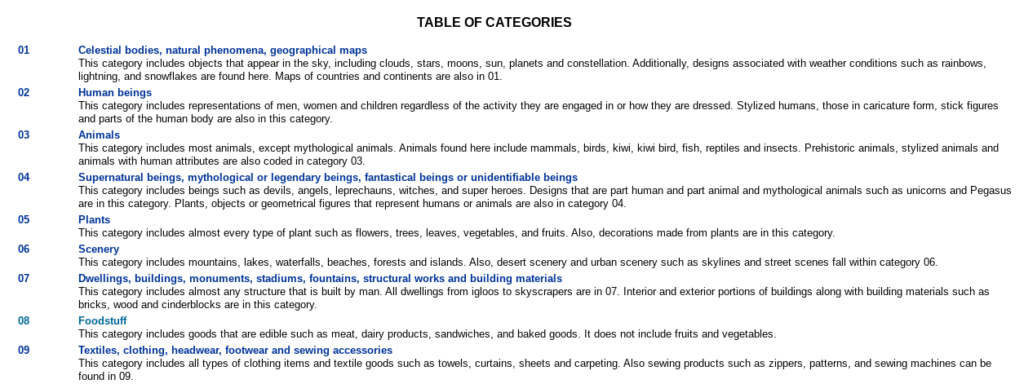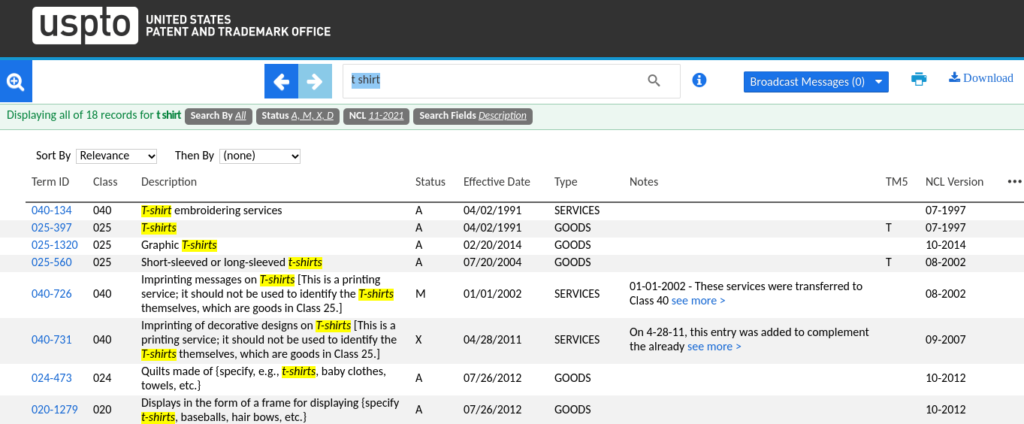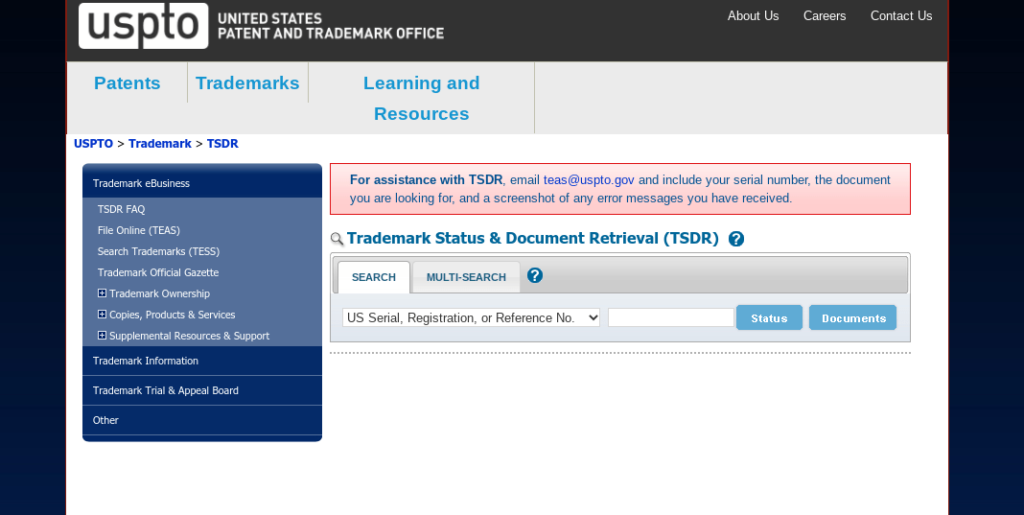A trademark protects your brand identity from copycats. If you have a unique and impactful name, slogan, or design, you need to make sure no other business can profit from your property.
Intellectual property theft costs US businesses $225 to $600 billion a year. Having a trademark will help prevent your business from suffering any losses.
Filing for a trademark is a complex legal process. But it’s certainly worth it.
In this guide, we’ll take you through the process step by step.
The Easy Parts of Trademarking a Business
Apply Online
You don’t have to deal with a bunch of paperwork that may get lost in the post. You can apply for your trademark online via the United States Patent and Trademark Office (USPTO), making the process convenient.
An Information-rich Application
The people at USPTO must know how difficult and intricate their application is. For this reason, there’s lots of information and guidance directly within the application to help you along the way. What’s more, its website contains detailed guidance, such as tutorials.
Even though the process can be complex, they’re trying their best to make it easier.
The Difficult Parts of Trademarking a Business
A Lengthy Process
You may not realize that preparing to file your trademark application takes a ton of time. Performing a clearance search to check that no other marks are similar to yours will eat up most of this time.
The reason being there’s no room for mistakes. You don’t want to risk having your application rejected or legal struggles at a later date.
Then, when you file your application, USPTO needs to perform checks of its own and forward your application to an examining attorney. This whole process can also take several months.
And the annoying thing is there’s no guarantee that you’ll even get the trademark.
You May Make Mistakes
There’s a lot of key information about your business and the trademark you need to put in your application. You really need to make sure you’ve dotted your i’s and crossed your t’s. Because if your application is rejected, you won’t receive a refund of the application fee.
Hence, it may be worth hiring a professional to file the trademark application for you. This will make the complicated process go smoother and likely quicker.
You can talk to your legal counsel or find a business formation service that offers trademark filing services.
MyCorporation, for example, provides this service and includes an extensive clearance search.

Step 1: Know What Kind of Application You Need
Before you do anything, you should make sure you’re familiar with the options available to you. If you file the wrong kind of application, you may be in for a lengthier and more expensive process.
Trademark vs. Patent vs. Copyright
Each of these terms is a form of intellectual property. You need to know the difference between them to ensure you properly protect yourself legally.
To put it simply, a trademark covers your name and logo. But it also can protect any slogan, design, word, symbol, or similar that’s unique to your business.
A patent protects the rights of an inventor. And if you’ve watched Shark Tank, you’ll know that you can apply for a utility and/or design patent.
Copyright covers an original work, e.g., software, literature, or images.
The Types of Trademark
You must know precisely which type of trademark you need before you register. The four different types are:
- Trademark – for businesses that sell goods.
- Service mark – for businesses that offer services.
- Collective mark – to separate goods and services sold by members of a particular group from non-members.
- Certification mark – proof that a business has met certain standards and regulations.
TEAS Standard vs. TEAS Plus
You can also file two types of trademark applications with USPTO, the TEAS Standard and TEAS Plus.
If you can make a complete application right off the bat, you can use the TEAS Plus filing option. It’s the cheaper option at $250 and is usually quicker to go through.
But if you don’t have all of the information you need to fill in the form, you’ll have to go with TEAS Standard, which costs $350.
Step 2: Carry Out a Clearance Search
You need to make sure that no other business has a similar name and/or design to yours.
The USPTO does its own search for each application, and if it finds something similar, your application will be rejected. Moreover, if your trademark resembles another too closely, you may face legal action down the line. That’s why you have to put in your due diligence here.
Know Exactly What You Want to Trademark
It may seem obvious. But you really can’t go into this kind of thing half-assed.
You must explicitly define what you want to trademark. Is it only words, such as your business name? Is it stylized words and/or design, e.g., your logo?
You also must define the goods or services the trademark will represent.
Search the USPTO Database
Use the Trademark Electronic Search System (TESS) to see if there are any existing or pending trademarks confusingly similar to yours.
If you don’t do this, then there’s a big chance your application will be rejected.
When you visit TESS, you’ll see that she has three different search options:

Basic Word Mark Search
Use this to search for the words in your business name, slogan, or whatever it is you hope to trademark.
Type your words in the Search Term bar and hit Submit Query. You’ll then get a list of word marks related to your query, like so:

Word and/or Design Mark Search (Structured)
You can use this form if you’re new to TESS. Though, the process is still rather complex. Again, this is why you may want to look into getting help from a business formation service.
First, choose a field from the dropdown menu to decide which category you want to search in.
For example, you’d select Goods & Services to search for businesses with a similar offering to yours.

If you want to search for similar design elements to your logo, you’ll need to enter a design code into the search box and choose Design Code from the field menu.
Use the USPTO Design Search Code Manual to find appropriate design codes.

To build on your search, use search operators. For instance, you may wish to search for trademarks with a name AND design similar to yours.
For instance, let’s say you have a bakery called Cute Cakes with a cupcake in the logo.
You’d need to select Basic Index from the Field section and type in “Cute” to find any other businesses with the term “cute” in the title.
Select AND from the Operator menu.
Then select Design Code from the next Field menu. Type in the code for cupcakes which you find in the design code manual. And you’ll end up with something like this:

It turns out there are a couple of similar trademarks in existence:

Word and/or Design Mark Search (Free Form)
This kind of search is the most efficient but requires expert knowledge of using the TESS platform.
Decide if It’s Worth Moving Forward
During this process, you should search for both marks that are exactly the same as yours and also similar marks. For instance, there may be another company with the same name, but it has a slightly different spelling.
This kind of thing could lead to legal problems. Plus, it’s just not a good idea business-wise. You want a brand that stands out from the crowd, after all.
If, after a comprehensive search, you think your mark is too similar to another, you may wish to go back to the drawing board.
Step 3: File Your Trademark Application
Now you’re ready to file your application with USPTO. Go through the application carefully, and make sure you are thorough.
Create a JPG Image
You must attach a JPG image of what you wish to trademark if your mark includes stylized wording and/or a design.
If you’ve already used the mark, symbol, or logo in a commerce transaction, you must also submit a specimen of it in action—for example, a label or tag attached to goods.
You don’t need to attach a specimen right away if you file a TEAS Standard application, but it is necessary for the TEAS Plus. This is a good example of how the two differ.
File Your Application Online
To apply for a trademark online, you must first create an account with USPTO.gov. Then select the type of application you wish to file for, i.e., TEAS Standard or TEAS Plus.
Fill out all of the mandatory fields and any additional areas you may require.
The information you must fill in includes basic applicant information, such as the mark owner, and personal details, like your business address.
You’ll also need to select the type of mark you wish to apply for, Standard Mark (words only) or Special Form (stylized words and design).
For the former, you’ll simply type in your words. For a Special Form mark, attach your JPG image.
Another important page is the Goods & Services page. Here you’ll describe the goods and services you want to trademark.
Use the USPTO ID manual to find the proper terms to describe your goods or services.
The trick is to be as specific as possible. As you can see here, in some cases, the term “T-shirts” may not suffice:

Then there’s the Filing Basis section which refers to why you’re making a trademark application.
Most applicants select either Actually using mark in commerce now or No use of mark yet, intending to use. In other words, are you selling stuff with your logo on it now? Or do you intend to in the near future?
If you’re using the mark now, this is where you’ll need to submit your specimen JPG.
When you’ve filled in all of your info, be sure to double-check everything on the Validation Page. The last thing you want is to delay the already lengthy process or even get rejected because of silly mistakes.
Step 4: Follow-Up on Your Application
Once you’ve filed your application, your journey doesn’t end there. You’ll want to monitor the progress of your application and take swift action if anything goes wrong.
Monitor the Progress of Your Application
It’s up to you to keep an eye on the status of your trademark application. You can do this by visiting the Trademark Status & Document Retrieval system (TSDR).
To check the status of your application, you’ll need to enter your serial, registration, or reference number.

You’ll first need to confirm that your application has been received within three weeks. After that, you should check its status at least every six months. That way, if there’s a problem with your application, you can act quickly to find a resolution.
Respond to Office Action
You’ll receive a letter from USPTO (office action) if they decide not to register your trademark. It’ll outline the “substantive reasons” for the rejection in the letter, including any errors made when you completed the application.
There are a few different “substantive reasons” why you might be rejected. For example, a confusingly similar mark:

Alternatively, there may be some minor corrections you can make to get your application back on track.
You have to respond to the office action within six months, or your application will be abandoned. You’ll receive an email to inform you that a letter has been sent. The email contains a link to the form you need to use to respond to the office action.
After your response, you’ll either receive notice that your application has been accepted or a final notice from USPTO that your mark will not be registered.
from Quick Sprout https://ift.tt/3wZCKpl
via IFTTT
